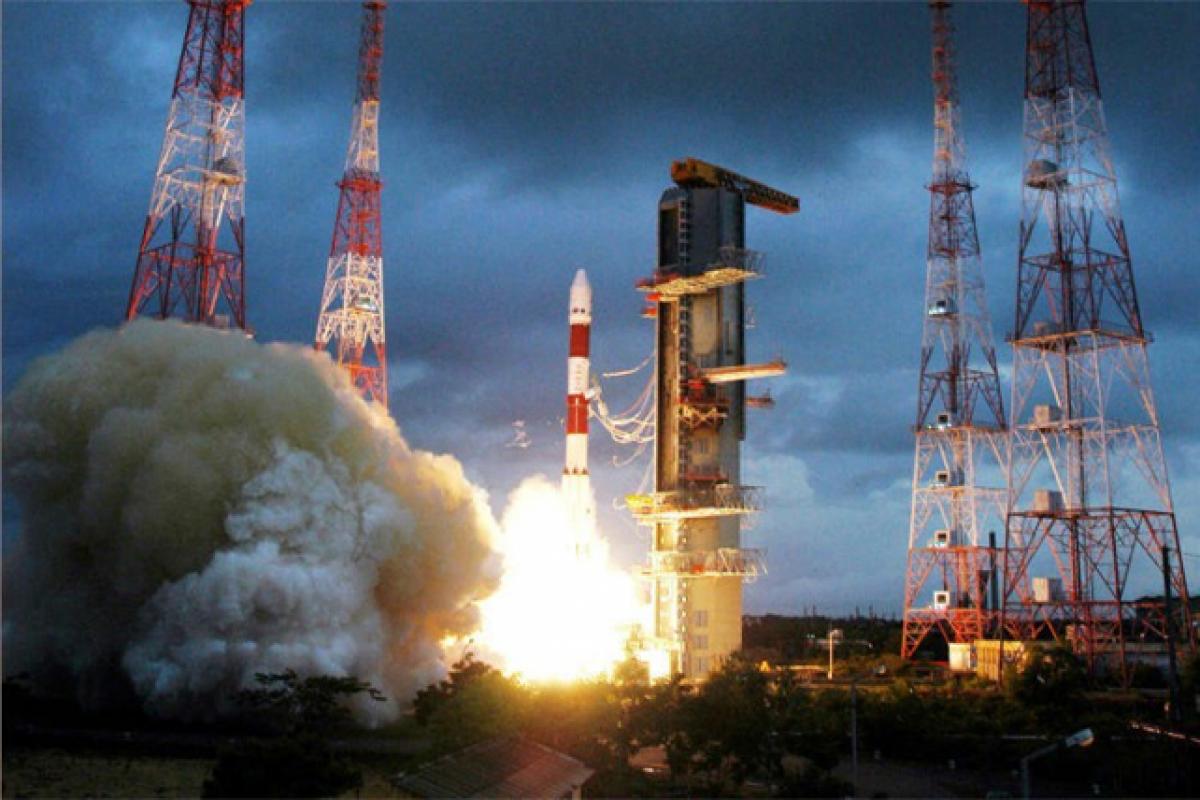Live
- Siddaramaiah has special love for Muslims: BJP
- We can’t afford spending less than 6% of GDP on healthcare
- Guinness World Record for continuous Hanuman Chalisa chanting
- REMOTE TRIBAL AREA TO GET NEW BRIDGE
- Dr LB College, Woxsen teams win in Climate Tank Accelerator event
- CM Revanth petitions for change in Paleru rly line
- Udupi MP seeks more key highways on top priority
- New diet plan rolled out at welfare hostels
- HRF demands for nation-wide caste census
- SP launches Medicover family health card
Just In

India Set To Launch Five British Satellites. The Indian space agency on Wednesday morning began the countdown for the July 10 rocket launch that would carry five British satellites.
Chennai: The Indian space agency on Wednesday morning began the countdown for the July 10 rocket launch that would carry five British satellites.
.jpg)
According to Indian Space Research Organisation (ISRO), the 62 hours and 30 minutes countdown for the July 10th night launch of rocket Polar Satellite Launch Vehicle (PSLV) XL variant began at 7.28 a.m. on Wednesday.
The rocket is scheduled to blast off at 9.58 p.m. on July 10 from the first launch pad with five satellites together weighing around 1,440 kg, for an undisclosed fee.
Since 1999 India till date has launched 40 satellites of other countries and the successful launch of the five British satellites would take the tally to 45.
The 44.4 metre tall and weighing 320 tonne the PSLV is a four stage/engine rocket with six strap on motors for addition thrust during the initial phase of the flight.
The first and third stages are powered by solid fuel and are cast ready while the second and fourth stages are powered by liquid fuel which will be filled during the countdown.
Apart from fuelling up the engines, all the systems would be checked and rechecked during the countdown.
According to ISRO, this is the heaviest commercial luggage carried by a PSLV rocket till date.
Of the five British satellites, three are identical DMC3 optical earth observation satellites weighing 447 kg. These will be put into a 647-km sun-synchronous orbit.
Of the other two satellites, CBNT-1 weighs 91 kg and also is an optical earth observation technology demonstration microsatellite, while the De-OrbitSail weighs 7 kg. This is an experimental nano satellite for demonstration of large thin membrane sail and drag deorbiting.
The total duration-from the rocket's blast off to the fifth satellite separation- will be around 19 minutes 16 seconds.
The three DMC3 and the CBNT-1 satellites are built by Surrey Satellite Technology Ltd. The De-OrbitSail is built by Surrey Space Centre.
According to ISRO, accommodating the three DMC3 satellites each with a height of about three metres within the existing payload fairing or the heat shield of the PSLV was a challenge. Thus, a circular L-adaptor and a triangular Multiple Satellite Adapter-Version 2 (MSA-V2) were newly designed and realised by ISRO for this specific purpose.
France's SPOT 7 satellite weighing 714 kg was the heaviest single foreign satellite carried by a PSLV rocket till now. It was launched on June 30, 2014.

© 2024 Hyderabad Media House Limited/The Hans India. All rights reserved. Powered by hocalwire.com







